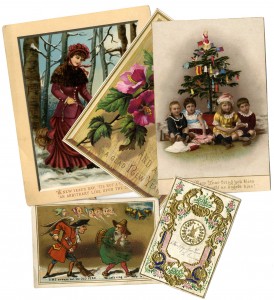
As many scholars of American history are aware, for many decades before 1840 the largest winter holiday in the nation was New Year’s Day, not Christmas. Christmas was perceived by many Protestant Americans as too closely linked to Catholicism. New Year’s Day, on the other hand, was a secular family holiday often marked by travel to see family, dinners, or community events – not unlike what we find ourselves doing over the holidays today.
The importance of New Year’s is reflected in many collections at AAS, including the ephemera holdings. Because the holiday falls in the dark and cold of January, many residents took the opportunity to hold cheerful dances, parties, and balls. Most of these events (including two represented below by extant invitations, one from 1827 and the other from 1866) were held on the evening of New Year’s Day, January 1st – when today we are watching football or nursing hangovers from the previous evening. The parties often included supper and live music and were intended to be enjoyable – one invitation states reassuringly: “No pains will be spared to make the occasion a pleasant one to all that attend.” These holiday events offered young people chances to meet and get acquainted, or were used as fund raisers for various causes such as anti-slavery or temperance. Some New Year’s dances were held as late as January 15th or as early as December 20th, indicating a certain stretched-out length to a holiday that we today mainly associate with the multi-second dropping of a ball in Times Square.
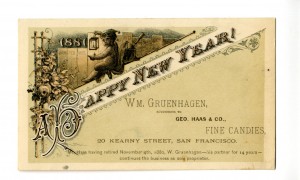
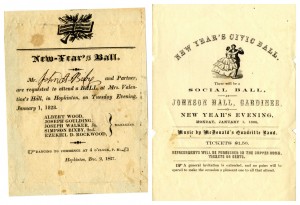
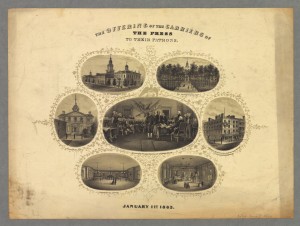
A desire for new beginnings meant new opportunities for merchants, too, and many promoted their goods for the New Year’s market. Gift book publishers were notorious, naming their titles New Year’s Offering, or New Year’s Gift to encourage exchange for the holiday. Newspaper carriers offered poetry sheets in exchange for New Year’s tips, and periodical publishers often included decorative prints as premiums in their January issues. Some businessmen handed out decorative advertising cards for the holiday, selling goods like jewelry, candy, and books. People exchanged greeting cards at New Year’s, and publishers like Louis Prang in Boston provided hundreds of designs from adorable children to kittens to snowy winter scenes.
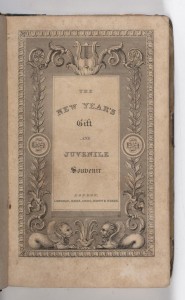
The New Year’s holiday has already slipped away and we are well into the year 2013. Consider saving that First Night button, party e-vite from your neighbors, or “Year in Review” issue of your favorite magazine. This modern ephemera all follows the long American tradition of recording our activities on January 1st – the start of the new calendar and the new year.
